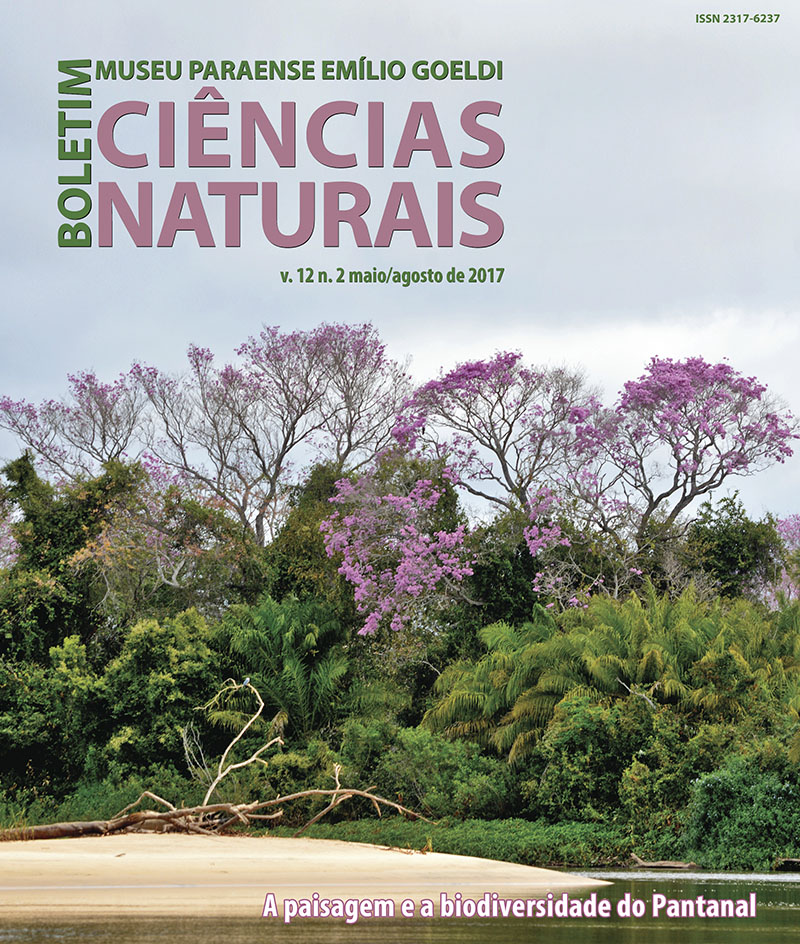"Paratudo" flowers (Tabebuia aurea) (Bignoniaceae) as a food resource for birds in the southern Pantanal, Brazil
DOI:
https://doi.org/10.46357/bcnaturais.v12i2.391Keywords:
Tabebuia aurea, Nectarivory, Psittacidae, Icteridae, Feeding ecology, FlorivoryAbstract
Tabebuia aurea (Silva Manso) Benth. & Hook. f. ex S. Moore is a deciduous tree species common in the Pantanal, where it produces hundreds to thousands of nectar-secreting flowers in each reproductive episode, which are visually attractive and visited by different groups of birds with diverse foraging behaviors. This study aimed to investigate the use of T. aurea "paratudo" flowers by birds, in three municipalities of the southern Pantanal. Twelve species of birds consuming the flowers of T. aurea were observed, three of which presented non-destructive behavior and nine showed destructive behavior. Most species belong to Psittacidae and these, as a whole, have a destructive behavior. Eupsittula aurea (Gmelin, 1788) (Psittacidae) and Molothrus rufoaxillaris Cassin, 1866 (Icteridae) were among the main florivores. The only species that did not show destructive behavior were hummingbirds.
Downloads
Published
Issue
Section
License
Publication means fully assigning and transferring all copyrights of the manuscript to the journal. The Liability Statement and
Assignment of Copyrights will be enclosed with the notice of acceptance. All the authors must sign the document and return it to the journal.








